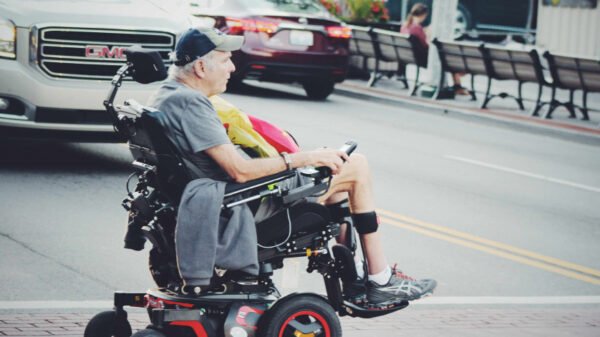Seasonal Hygge Practices: Embracing Warmth and Comfort
As the colder months arrive, the Danish concept of hygge (pronounced “hoo-gah”) is gaining global popularity. Hygge, which focuses on creating coziness, contentment, and a sense of well-being, is being embraced through cozy interiors, warm beverages, and slow living practices. This lifestyle trend provides a way to find joy and comfort during the shorter, darker days of fall and winter.
Understanding Hygge: A Philosophy of Comfort
Hygge is more than just a lifestyle trend; it’s a philosophy deeply rooted in Danish culture. It revolves around finding happiness in simplicity and fostering a sense of togetherness and warmth. Whether it’s lighting candles, sharing a meal with loved ones, or curling up with a good book, hygge encourages slowing down and savoring life’s small pleasures. As colder months often bring challenges like seasonal blues, hygge offers a comforting antidote that promotes mindfulness and positivity.
Cozy Interiors for a Hygge Home
Creating a hygge-inspired home is central to embracing the concept. Soft textures, warm lighting, and inviting decor transform living spaces into havens of comfort. Items like chunky knit blankets, fluffy rugs, and cushions enhance the coziness of a room, while natural elements like wood, stone, and greenery add warmth and connection to nature. Candles and fairy lights are quintessential in hygge decor, creating a soft, glowing ambiance that invites relaxation and peace.
Warm Drinks and Comforting Foods
Warm drinks and hearty foods play a significant role in hygge practices. Sipping on hot chocolate, mulled cider, or herbal teas by a crackling fire embodies the essence of hygge. Traditional comfort foods, such as soups, stews, and freshly baked goods, nourish both the body and the soul. Sharing these meals with friends and family enhances the experience, fostering connection and joy. The ritual of preparing and savoring these treats is an integral part of slow living.
Slow Living: Savoring the Present Moment
At its core, hygge aligns with the principles of slow living—being present and intentional with one’s time. Hygge encourages people to disconnect from the rush of daily life and prioritize meaningful activities. This might include reading, journaling, knitting, or engaging in conversations without distractions. By focusing on quality over quantity, hygge helps individuals create a deeper appreciation for their surroundings and the people they share them with.
The Power of Nature in Hygge
Nature is an essential component of hygge, even during the colder months. Spending time outdoors in crisp weather, whether it’s taking a walk in the park or enjoying a snowy hike, is a way to embrace the season. Bringing natural elements indoors, such as pinecones, branches, or seasonal flowers, helps maintain a connection to the outside world. Hygge celebrates the changing seasons, encouraging people to find beauty and comfort in nature’s rhythms.
Hygge and Togetherness
Hygge thrives on the idea of togetherness, emphasizing the importance of spending time with loved ones. Gathering around a table for a home-cooked meal, playing board games, or simply chatting by the fire are all hygge-inspired activities. These moments of connection deepen relationships and create cherished memories. Even in smaller, quieter gatherings, hygge fosters a sense of belonging and community.
Digital Detox for a Hygge Lifestyle
A hygge lifestyle often involves disconnecting from technology to focus on the present moment. Reducing screen time and embracing tech-free evenings helps create a calmer, more intimate environment. Instead of scrolling through devices, individuals can engage in creative activities, enjoy quiet reflection, or spend quality time with family. This digital detox aligns with the slow living principles of hygge, encouraging mindfulness and reducing stress.
Incorporating Hygge Practices into Daily Life
Hygge is not limited to specific seasons or grand gestures; it can be incorporated into daily routines. Simple acts like lighting a candle during dinner, wrapping up in a soft blanket with a favorite book, or taking a moment to enjoy a warm drink can bring a sense of hygge to everyday life. These practices help infuse even the busiest days with moments of peace and joy, reminding people to slow down and savor the little things.
The Mental Health Benefits of Hygge
The mental health benefits of hygge are widely recognized, particularly during the colder months when seasonal affective disorder (SAD) can impact mood. By promoting coziness, connection, and mindfulness, hygge helps combat feelings of loneliness and stress. The focus on creating a warm, welcoming environment supports emotional well-being and fosters a sense of security and happiness.
The Global Appeal of Hygge
While hygge originates from Denmark, its universal appeal has made it a global phenomenon. People around the world are adapting hygge practices to their own cultures and climates, finding comfort in its emphasis on simplicity and togetherness. The growing popularity of hygge reflects a collective desire for balance and contentment, particularly in an era where fast-paced living and digital distractions often take precedence.
In conclusion, seasonal hygge practices offer a meaningful way to embrace the colder months with warmth, comfort, and mindfulness. Through cozy interiors, slow living, and a focus on connection, hygge helps individuals find joy in the present moment and foster a sense of well-being. As this Danish concept continues to inspire people worldwide, it reminds us of the power of simplicity and the beauty of life’s small pleasures.


































